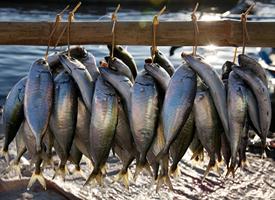Pediatric Research Newsletter
March 2015
Can Boosting CD4 T Cells Improve the Effectiveness of Influenza Vaccines?
 Jennifer L. Nayak, M.D., Assistant Professor of Pediatrics, is studying the role of CD4 T cells in the development of protective immune responses to influenza vaccines. Specifically, she is examining how preexisting memory CD4 T cells directed against the HA protein affect the immune system’s ability to respond to new vaccines targeting potentially pandemic strains of avian influenza. The HA protein is a highly variable viral surface glycoprotein, and the development of neutralizing antibodies against this protein is traditionally considered a post-vaccination correlate of protection. Her research seeks to determine whether the poor immunogenicity of vaccines against potentially pandemic avian influenza strains may be due, in part, to a lack of HA-specific CD4 T cells available to provide help to B cells. If this is the case, then boosting HA-specific CD4 T cells before a possible pandemic could provide both protective immunity and improve the immunogenicity of avian influenza vaccines.
Jennifer L. Nayak, M.D., Assistant Professor of Pediatrics, is studying the role of CD4 T cells in the development of protective immune responses to influenza vaccines. Specifically, she is examining how preexisting memory CD4 T cells directed against the HA protein affect the immune system’s ability to respond to new vaccines targeting potentially pandemic strains of avian influenza. The HA protein is a highly variable viral surface glycoprotein, and the development of neutralizing antibodies against this protein is traditionally considered a post-vaccination correlate of protection. Her research seeks to determine whether the poor immunogenicity of vaccines against potentially pandemic avian influenza strains may be due, in part, to a lack of HA-specific CD4 T cells available to provide help to B cells. If this is the case, then boosting HA-specific CD4 T cells before a possible pandemic could provide both protective immunity and improve the immunogenicity of avian influenza vaccines.
Together with Dr. Andrea J. Sant in the Center for Vaccine Biology and Immunology, Dr. Nayak examined CD4 T cell and neutralizing antibody responses induced by an inactivated H5 vaccine in a cohort of subjects that had undergone prior immunization with a drifted H5 vaccine years earlier. They compared these responses to those developed by subjects with no prior history of immunity to H5N1 influenza who had received a traditional prime-boost vaccination regimen during the study. Subjects that had previously received an inactivated, drifted H5 vaccine had more robust neutralizing antibody responses and striking and selective changes in their CD4 T cell repertoire. While all subjects responded equally well to the conserved NP protein, previously vaccinated subjects had a higher frequency of CD4 T cells reactive to the H5 HA protein before vaccination, suggesting that the original avian vaccine primed long term memory CD4 T cells specific for H5 HA. The memory CD4 T cells responded to the H5N1 revaccination and produced a greater post-vaccine HA-specific CD4 T cell response. Most importantly, expansion of CD4 T cells specific for the H5 HA protein correlated with neutralizing antibody production. These findings suggest that previous immunization with a drifted H5N1 vaccine generates an enriched population of HA-specific CD4 T cells that can facilitate the production of neutralizing antibody on re-immunization.
Ongoing infections with the H5N1 avian influenza have been occurring since 1997 and previous research indicates that only a small number of mutations are needed for the virus to gain the ability to spread from person to person. In a pandemic, when time is of the essence, anything that shortens the time to immune protection – like giving one vaccine instead of two – will significantly limit a pandemic’s spread. This work suggests that pre-pandemic immunization with a vaccine derived from an avian influenza strain will increase the rapidity with which neutralizing antibodies are generated and will reduce the number of doses required to generate protective immunity even if the pandemic strain has drifted from the strain in the initial vaccine. Furthermore, the memory CD4 T cell population induced by the pre-pandemic vaccine may potentiate a protective antibody response during active infection with an avian virus.
This research project was part of studies conducted by the New York Influenza Center of Excellence, within the National Institutes of Health funded Centers of Excellence for Influenza Research and Surveillance (CEIRS) Network. The research was also funded in part by the Department of Pediatrics K12 “Translational Molecular Pediatric Research” grant. In addition to Drs. Nayak and Sant, the research team consisted of Katherine Richards from the David H. Smith Center for Vaccine Biology and Immunology, Dr. Hongmei Yang, Research Assistant Professor of Biostatistics and Computational Biology and Dr. John Treanor, Professor and Chief of Infectious Diseases, Department of Medicine.
Fatty Acids in Fish May Shield Brain from Mercury Damage
 New findings from research in the Seychelles provide further evidence that the benefits of fish consumption on prenatal development may offset the risks associated with mercury exposure. In fact, the new study suggests that the nutrients found in fish have properties that protect the brain from the potential toxic effects of the chemical.
New findings from research in the Seychelles provide further evidence that the benefits of fish consumption on prenatal development may offset the risks associated with mercury exposure. In fact, the new study suggests that the nutrients found in fish have properties that protect the brain from the potential toxic effects of the chemical.
- Read the full article "Fatty Acids in Fish May Shield Brain from Mercury Damage" in the URMC Newsroom.
 Medical Student Highlight
Medical Student Highlight
UR Medical Student, Kyle Rodenbach, has been selected to participate in this year’s prestigious Kidney STARS Program, part of the American Society of Nephrology (ASN) Kidney Week 2014 in Philadelphia, PA (November 11-16, 2014). Kyle will be participating in the program’s “clinical nephrology track” and is looking forward to learning more about clinical aspects of nephrology, hot topics in clinical research and career opportunities.
The Kidney STARS (Students and Residents) Program provides interested medical students and residents an opportunity to learn more about all aspects of nephrology. The program features “Meet the Experts” sessions with leaders in the field, a guided tour of innovative research abstracts, and a number of networking events.
In addition to his achievement as a Kidney STAR, Kyle was selected into this year’s UR CTSI Year Out program. As a UR CTSI scholar, Kyle is earning a stipend and gaining valuable research experience between his third and fourth years of medical school. He is working with internationally-known researcher, George J. Schwartz, M.D. on a funded project, “Cystatin-C-based renal reserve in children with history of hemolytic uremic syndrome-associated acute kidney injury.”
Department of Pediatrics Highlighted Publications
- Unraveling the Biology of a Fungal Meningitis Pathogen Using Chemical Genetics. Brown JC, Nelson J, VanderSluis B, Deshpande R, Butts A, Kagan S, Polacheck I, Krysan DJ, Myers CL, Madhani HD. Cell. 2014 Nov 20;159(5):1168-87. doi: 10.1016/j.cell. 2014.10.044.
- Effect of Influenza A(H5N1) Vaccine Prepandemic Priming on CD4+ T-Cell Responses. Nayak JL, Richards KA, Yang H, Treanor JJ, Sant AJ. J Infect Dis. 2014 Nov 6. pii: jiu616.
- Prompting Asthma Intervention in Rochester-Uniting Parents and Providers (PAIR-UP): A Randomized Trial. Halterman JS, Fagnano M, Tremblay PJ, Fisher SG, Wang H, Rand C, Szilagyi P, Butz A. JAMA Pediatr. 2014 Oct 6;168(10):e141983. doi: 10.1001/jamapediatrics. 2014.1983. Epub 2014 Oct 6.
- Neonatal Hyperoxia Leads to Persistent Alterations in NK Cell Responses to Influenza A Virus Infection. Reilly EC, Martin KC, Jin GB, Yee M, O'Reilly MA, Lawrence BP. Am J Physiol Lung Cell Mol Physiol. 2014 Nov 7:ajplung.00233.2014. doi: 10.1152/ajplung.00233.2014.
- Early Developmental Outcomes of Children With Congenital HHV-6 Infection. Caserta MT, Hall CB, Canfield RL, Davidson P, Lofthus G, Schnabel K, Carnahan J, Shelley L, Wang H. Pediatrics. 2014 Dec;134(6):1111-8. doi: 10.1542/peds.2014-0886. Epub 2014 Nov 3.
- Discordance Between Resident and Faculty Perceptions of Resident Autonomy: Can Self-Determination Theory Help Interpret Differences and Guide Strategies for Bridging the Divide? Biondi EA, Varade WS, Garfunkel LC, Lynn JF, Craig MS, Cellini MM, Shone LP, Harris JP, Baldwin CD. Acad Med. 2014 Oct 21.
- Initiation of Electron Transport Chain Activity in the Embryonic Heart Coincides with the Activation of Mitochondrial Complex 1 and the Formation of Supercomplexes. Beutner G, Eliseev RA, Porter GA Jr. PLoS One. 2014 Nov 26;9(11):e113330. doi: 10.1371/journal.pone.0113330. eCollection 2014.